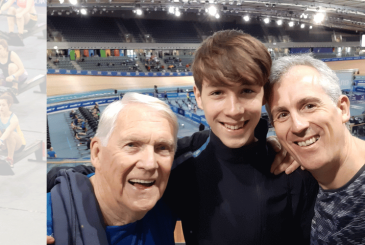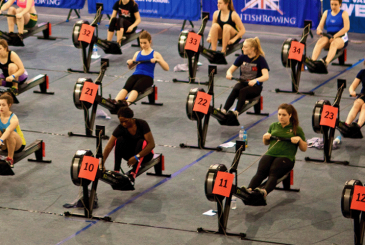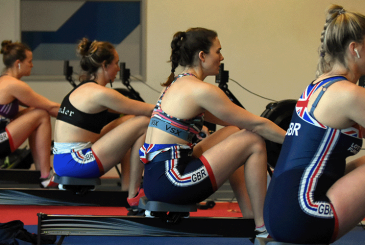RED-S is something that all rowers, coaches and support staff should be aware of, as it can lead to impaired health and performance. Hatty Bates, Performance Nutritionist for British Rowing, provides an overview
First things first, what is Relative Energy Deficiency in Sport?
Relative Energy Deficiency in Sport (RED-S) can affect both males and females and can have detrimental effects on both health and performance.
Low-energy availability underpins the concept of RED-S. This occurs when there is a mismatch between an athlete’s energy intake (diet) and energy expenditure (including both training and resting metabolic processes). If an athlete is in a state of low-energy availability for a prolonged period of time the body switches into “energy-saving mode”. Here, physiological functions such as cardiovascular health, menstrual function and bone health, begin to shut down causing both health and performance to deteriorate.
It is also important to recognise that RED-S can occur with, or without, disordered eating or an eating disorder. Below, we explore the signs and symptoms of RED-S, plus who may be at risk of RED-S and where to get help.
Who is at risk of RED-S?
RED-S was previously referred to as the Female Athlete Triad, however in 2014 the IOC renamed the syndrome to include both males and females, as well as a number of other symptoms.
From a nutrition perspective, the key thing to address is the energy deficit
It can impact all rowers regardless of gender, age or level of performance. As an example, young developing rowers could be at risk of RED-S due to increased energy demands and nutritional needs whilst in a phase of rapid growth and development. In addition, light-weight rowers who need to lower their energy intake to make weight, whilst still having high energy demands due to training, may be at risk of RED-S. Therefore, education on topics such as weekly training and energy demands, nutritional needs and how to optimise body composition safely are essential.
What are the symptoms of RED-S?
RED-S can show through a number of physical and psychological symptoms which can often go unnoticed. As an example, getting stubborn and lingering colds regularly may be a sign that the immune system cannot function optimally due to low-energy availability. Below are a few signs and symptoms of RED-S which are important to be aware of:
Amenorrhea: an obvious symptom of RED-S in female athletes is hypothalamic amenorrhea which can be defined as an absence of at least three consecutive menstrual cycles.Amenorrhea could also be due to other underlying medical conditions (eg polycystic ovaries) and it is important to speak to your doctor about this.
Poor bone health: it is well established that low-energy availability contributes to impaired bone health. As a result, those rowers who may not consume enough energy may be at an increased rise of bone stress injuries. If you have any reoccurring bone injuries, or it is taking longer than expected for bones to heal, then this could be a sign of RED-S.
Gastrointestinal symptoms: when there is not enough energy in the system, digestion begins to slow down. This may lead to symptoms such as bloating, constipation and other symptoms of Irritable Bowel Syndrome (IBS).
Poor performance: persistent low-energy availability could impair performance by preventing rowers from being able to complete high-quality training sessions. As an example, key processes such as glycogen replenishment (to restore energy) and protein synthesis (to adapt from training) may be impaired. In addition, as low-energy availability increases the risk of illness and injury, performance may be impaired due to time away from the training environment.
Avoiding low-energy availability
Maintaining optimal energy availability is important for long-term health and performance. Therefore, having an understanding of your daily energy demands, and therefore energy intake requirements, especially during heavy periods of training is important.
Remember to fuel well prior to training sessions by consuming carbohydrate-based meals or snacks and recover well after training by hitting the three Rs of recovery. On particularly heavy training days, introducing an energy-dense smoothie containing food such as milk, honey, oats, avocado and bananas will help you reach those higher energy needs. Avoid excluding any foods or whole foods groups unless you have an allergy or for medical reasons.
Treatment of RED-S
Screening and diagnosis of RED-S can be challenging, but early detection is important to maintain and improve performance as well as prevent long-term health consequences.
From a nutrition perspective, the key thing to address is the energy deficit. Therefore, increasing energy intake as well as considering the timing and composition of meals and snacks is essential. If you have concerns or questions around RED-S speak to your doctor or registered dietitian. Some athletes may also benefit from speaking to a psychologist.
It is important to remember that everyone is unique, and treatment of RED-S should be individualised and tailored towards personal circumstances and symptoms.
Summary
RED-S is something that all rowers, coaches and support staff should be aware of. The syndrome of RED-S is underpinned by low-energy availability and can lead to impaired health and performance.
There are multiple signs and symptoms of RED-S such as decreased concentration, chronic fatigue, regular bouts of illness and absence of menstrual cycles. It is important to consult with a doctor or registered dietitian if you think you may have RED-S.
Photo: Drew Smith










